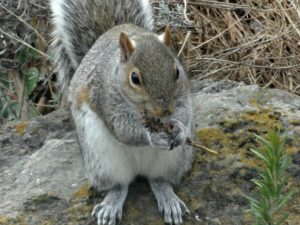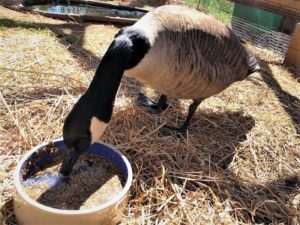
We are in an era of new understandings of plant relationships and family connections due to the new technologies of DNA testing being applied to plants. In the past, taxonomic designations on plants were based on observable-by-naked-eye comparisons of plants and their structures. In recent years, there have been many rewrites to which families and genera many plants belong. This complicates things even more for plant students who nowadays can encounter a plant listed in one source with one botanical name and listed with a different botanical name in another source. Thankfully, the Flora of Virginia has been published with the most up-to-date understandings since 2016. The Flora is one place to get the most current accurate botanical name for when one gets confused. It is a confusing time, but a necessary one. Science is always on the move to improve itself! I have done my best to include the most current botanical classifications for plants to date.
But there are other plants that can be difficult to determine their genera just from their common name. I especially want to address the following common names listed on this website that I was unable to fully figure out:
- Millets
- Bulrushes
- Duckweeds
“Wild” Millets
There are many eastern US species that are referred to as “wild millet”— and none of them are actually “wild.” All of them are cultivated. So when you see that an animal is listed as eating “wild millet,” know that I do not know which of the below species is indicated! Ostensibly, any of these seeds could be tried as a food item, and the animal will decide if this is a “brand” it likes! It’s worth looking into these because “wild millet” ranks as the 21rst on our overall Favorite Foods list!
Millet Genera |
Genus Commonly Referred to as |
Predominently |
Sample Species of this Genus |
Sample Species Common Name |
| Echinochloa spp. | barnyard grasses or cockspurs | more non-native than native species | E. esculenta | Japanese millet |
| Eleusine spp. | goose grasses | all non-native species | E. coracana | finger millet |
| Eragrostis spp. | love grasses | a mix of native and non-native species | E. tef | tef |
| Panicum spp.
|
panic grasses
|
more native than non-native species | P. miliaceum | proso millet (white) |
| Paspalum spp. | crown grasses or paspalums | more native than non-native species | P. scrobiculatum | kodomillet |
| Pennisetum spp.
|
fountain grasses | more native than non-native species | P. glaucum | pearl millet |
| Setaria spp.
|
foxtails or bristlegrasses | more native than non-native species | S.italica | foxtail millet |
| Urochloa spp.
|
signal grasses
|
a mix of native and non-native species | U. ramosa | browntop millet |
Bulrushes
Similarly, there are a number of genera that are commonly referred to as “bulrushes.” Here are some common genera of the eastern half United States that folks call bulrush. Regarding grass-like plants, remember this helpful identification rhyme:
“Sedges have edges,
Rushes are round,
Grasses have knees where the leaves are found!”
(Or, alternately, “Grasses are hollow, what have you found?”)
Possible bulrush genera:
- Blysmus spp.- Native, but mostly in Canada.
- Bolboschoenus spp.- Mostly native species and found throughout the USA.
- Cyperus spp.- Mostly natives with some significant non-natives, throughout the USA.
- Isolepis spp.- Mostly native plants.
- Oxycaryum spp.- Natives to the southeast USA.
- Schoenoplectus spp.- Mostly natives plants, throughout the USA.
- Schoenoplectiella spp.- Mostly natives plants, throughout the USA.
- Scirpus spp.- All natives, throughout the USA.
- Scirpoides spp.- Non-native, limited to Kentucky and New York.
- Trichophorum spp.- All natives, though much of the USA.
- Websteria spp.- Native, southern USA.
Duckweeds
“Duckweed” is another generalized term that can refer to a couple of genera found in wetlands, marshes, ponds, lakes and other wet areas, but most commonly refers to the genus Lemna. And duckweed itself is also sometimes commonly called duckmeal, duckmeat or watermeal by locals! Yikes! Here are the genera of the eastern half United States– all are predominantly are native plants–that might be “duckweed.”
- Lemna spp. Natives throughout the USA.
- Spirodela spp.- Natives throughout the USA.
- Wolffia spp.- Natives throughout the USA.

